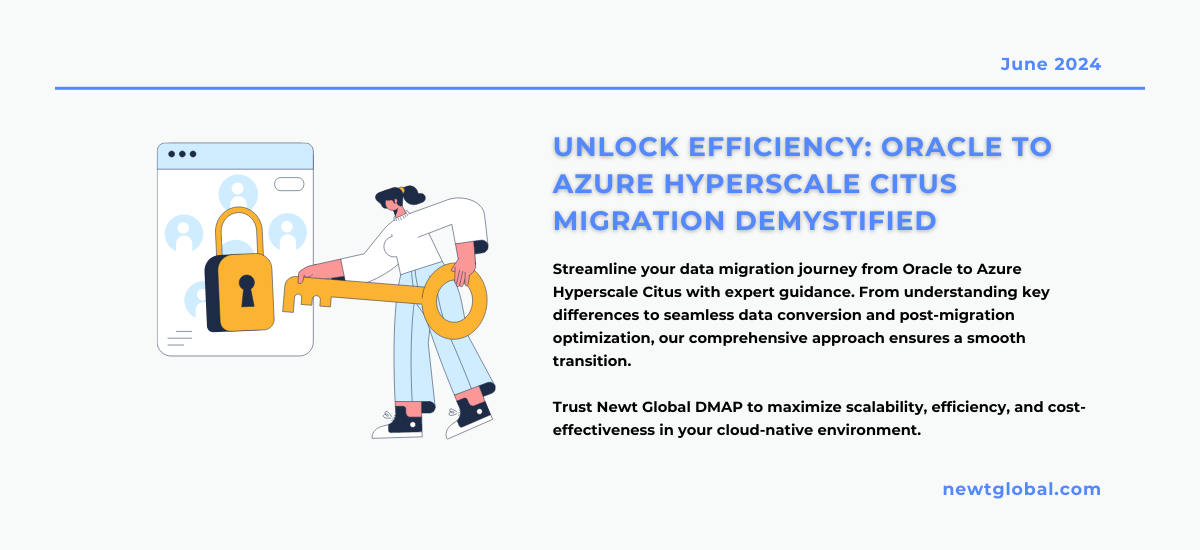
Businesses are trying to find better ways to manage their data that are both efficient and don’t cost too much money. One way they’re doing this is by moving from traditional Oracle databases to newer cloud-based solutions like Azure Hyperscale Citus. If you use Oracle or are interested in moving databases, get ready because we’re going to talk about the challenges of making this switch.
Azure Hyperscale Citus is part of the Azure Database for PostgreSQL system. It’s meant to be really good at handling a lot of data, performing well, and being reliable in the cloud. But moving your data to it isn’t simple. We’ll explain each step of the process to help you understand what’s involved.
Understanding the Difference
Before you start moving your data, you need to know how Oracle and Azure Hyperscale Citus are different. Oracle is a big name in databases, great for handling complicated tasks. Azure Hyperscale Citus, on the other hand, works with PostgreSQL and can spread data and tasks across many computers, making it fast and able to handle huge amounts of data.
Planning the move:
-
- Check your data: See how much data you have, what kind of data it is, and how complicated your programs are that use the data. This will help you identify any challenges that might come up during the move.
- Adjusting your data structure: Hyperscale Citus is based on a different system than Oracle, so you might need to make some changes to how your data is organized. There are tools to help automate this, but you might need to do some things manually for certain data types.
- Pick a moving strategy: Decide how you want to move your data. There are a few options, like moving everything at once, moving it in pieces, or a combination of both. Consider how much downtime you can afford and how much data you have.
- Clean up your data: Before you move it, make sure your data is accurate and consistent. This might involve fixing any formatting errors, getting rid of any duplicates, and deleting any outdated information.
- Plan your resources: Figure out how much computer power, memory, and storage you’ll need in Azure Hyperscale Citus to run your programs smoothly.
Moving your data:
-
- Use helpful tools: There are tools available, like the Azure Database Migration Service, that can help automate parts of the moving process, like changing your data structure and moving the data itself.
- Check compatibility: Make sure the features and programs you use with Oracle will also work with Hyperscale Citus. There might be some limitations, and you might need to find alternative solutions for some things.
- Test everything: Once you’ve moved your data, make sure everything works properly. This includes checking that your programs still function correctly and that your data is accurate.
- Set performance goals: Decide how fast you want your data to run and how long you can afford for it to take to respond to requests. Then monitor these metrics to see if you need to make any adjustments.
- Keep things running smoothly: Once you’ve moved your data, you’ll still need to keep an eye on it. There are tools available to help you monitor how your data is performing and to identify any problems.
After the move:
-
- Keep monitoring: Regularly check on your data’s health and performance using Azure’s monitoring tools. This will help you catch any issues early on and fix them before they become a bigger problem.
- Always optimizing: Even after you’ve moved your data, you’ll still need to make adjustments from time to time to make sure your data keeps up with your business needs.
- Managing costs: Keep track of how much you’re spending on Azure. There are tools to help you optimize your costs and make sure you’re getting the most out of your investment.
- Security first: Make sure your data is secure in Azure Hyperscale Citus. This includes setting up access controls, encryption, and other measures to protect your data from unauthorized access.
- Stay up and running: Set up a system to ensure your data is always available, even if there’s a hardware failure. This might involve using features like automatic failover or backing up your data to another location.
- Performance tuning: Regularly monitor your data’s performance and make adjustments as needed to keep it running at its best.
Wrap-Up
Moving from Oracle to Azure Hyperscale Citus can make your database more powerful and efficient. But it’s a big project that needs careful planning and management. If you understand the process and take it step by step, you can make the most of Azure Hyperscale Citus for your business.
Seamless Data Conversion with Newt Global DMAP
Embarking on a journey from Oracle to Azure Hyperscale Citus demands precision and expertise. Our comprehensive guide illuminates every phase of the migration process, from pre-migration planning to post-migration considerations, empowering you to navigate with confidence. Leveraging Azure Database Migration Service and other tools, we ensure seamless schema conversion, data migration, and performance optimization.
With Newt Global DMAP, experience tailored solutions for maximizing scalability, efficiency, and cost-effectiveness in your cloud-native environment. Contact us at marketing@newtglobalcorp.com to embark on your migration journey today.
Newt Global DMAP is a world-class product enabling mass migration of Oracle DB to cloud-native PostgreSQL faster, better, and cheaper.
